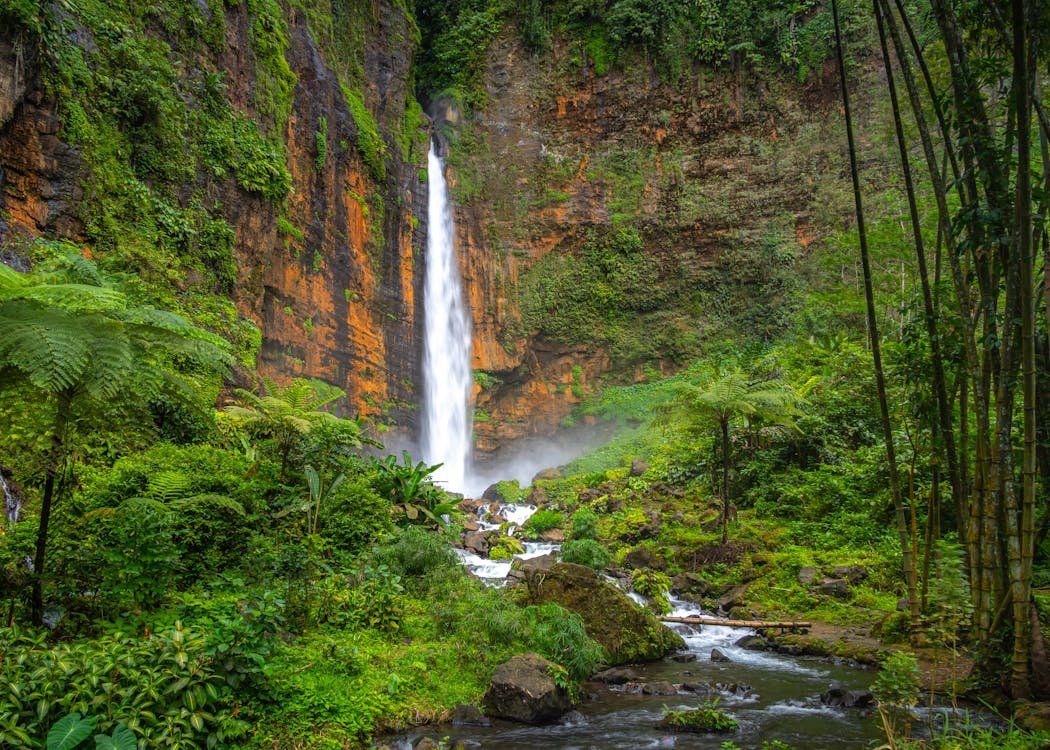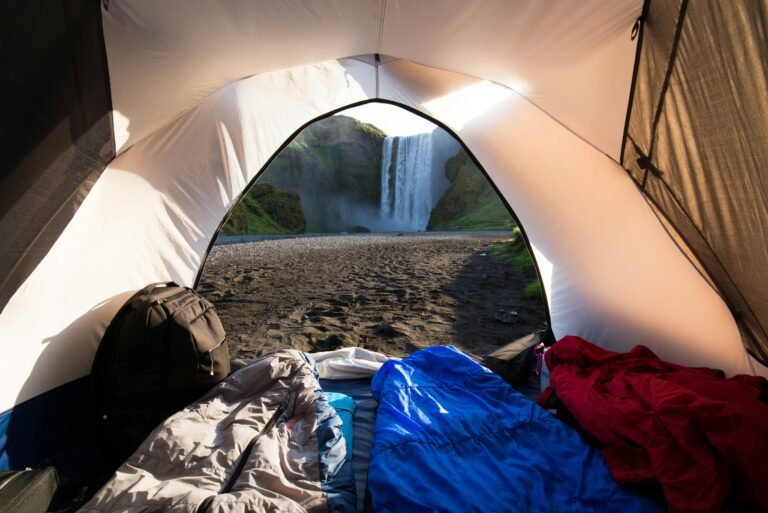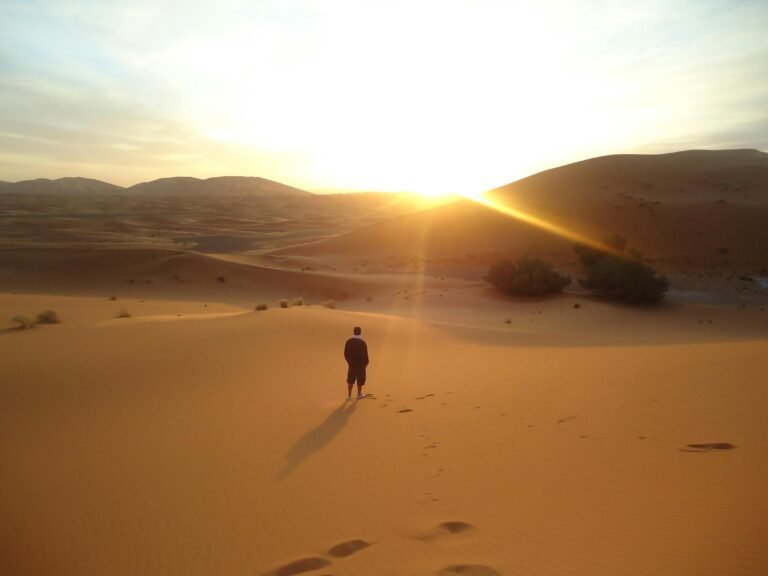Top 7 Jungle Treks in Southeast Asia

Feeling stuck in the daily grind? It might be time to trade the city noise for the quiet, untamed jungles of Southeast Asia. This region is home to some of the most exciting jungle treks on the planet. Think lush forests, amazing wildlife, and trails that take you to places you’ve only dreamed of.
I’ve spent years exploring these paths, leaving behind the rush of everyday life for the peace and beauty of the wild. If you’re looking for an adventure, this guide will help. I’ll show you the top seven jungle treks Southeast Asia has to offer. Whether you’re new to trekking or a seasoned pro, there’s a trail here for you.
Grab your backpack, lace up your boots, and let’s get started.
1. Mount Kinabalu Trek, Malaysia

If you’re serious about trekking, Mount Kinabalu is one of the best adventures in Southeast Asia. Rising 4,095 meters above sea level, this mountain offers more than just a hike—it’s a journey through some of the most diverse ecosystems in the world.
What Makes It Special?
The trek begins in the heart of a tropical rainforest, where you’re surrounded by tall trees, vines, and the sounds of wildlife. As you climb higher, the landscape changes dramatically. You’ll leave the jungle behind for cooler, misty zones filled with unique plants like pitcher plants and orchids. Near the top, it’s all rocky terrain, and the views are nothing short of spectacular.
At the summit, you’re rewarded with one of nature’s most beautiful displays: sunrise above the clouds. Imagine standing on top of Southeast Asia as the sun paints the sky in hues of orange and gold. It’s a moment that makes all the effort worthwhile.
Mount Kinabalu is also a UNESCO World Heritage Site, and for good reason. The mountain is home to thousands of plant species, including the Rafflesia, the world’s largest flower. You might also see wildlife like mountain squirrels, birds, or even the shy tarsier.
Trail Overview
- Day 1: Start at the base of the mountain in a place called Timpohon Gate. The trail is steep but well-marked. You’ll pass through thick jungle, where it’s humid and alive with the sounds of insects and birds. After several hours, you’ll reach a rest stop, usually at Laban Rata, a lodge where trekkers spend the night.
- Day 2: The final ascent begins early, usually around 2 AM. The climb is steep, and you’ll need headlamps to guide the way. The air is thinner, and the terrain is rocky. After about 3-4 hours, you’ll reach Low’s Peak, the highest point. From here, the sunrise view is unforgettable.
What You’ll See
- Rare plants: Spot the giant Rafflesia flower, mossy trees, and orchids.
- Unique wildlife: Look for birds, mountain squirrels, and other creatures that call this mountain home.
- Incredible views: As you ascend, the views get better, and at the top, you’ll feel like you’re on top of the world.
Difficulty Level
This trek is moderate to advanced, so it’s not for beginners. The trail can be steep, and the high altitude makes the climb tougher. You’ll need to be physically fit and prepared for the challenge.
How to Prepare
- Get a permit and guide: All climbers need a permit and are required to hire a guide, which is easy to arrange through the park office.
- Pack smart: Bring warm clothes for the summit, plenty of water, and snacks.
- Book in advance: Mount Kinabalu is popular, and spots fill up fast, especially for overnight stays at Laban Rata.
Mount Kinabalu is more than a trek; it’s a chance to connect with nature in one of its most awe-inspiring forms. Whether it’s your first time or you’re a seasoned hiker, this trek will test you and leave you with memories to treasure for a lifetime.
2. Taman Negara Rainforest Trek, Malaysia

If you want to step back in time and experience one of the oldest rainforests on Earth, Taman Negara is the place to be. Estimated to be 130 million years old, this vast jungle offers a combination of easy trails and deeper, more challenging routes for adventure seekers. It’s a trek that lets you connect with nature and feel the energy of an ancient, untouched world.
Why It’s Incredible
Taman Negara is a biodiversity hotspot. The jungle is alive with towering trees, dense greenery, and the sounds of wildlife. It’s not just about trekking here—you can walk among the treetops on one of the world’s longest canopy walkways, explore hidden caves, or follow rivers that wind through the jungle.
If you’re lucky, you might spot animals like tapirs, hornbills, or even the elusive Malayan tiger. The rainforest is also home to butterflies, monkeys, and countless birds, making it perfect for wildlife lovers.
Trail Highlights
- Canopy Walkway:
- Suspended high above the ground, this is one of Taman Negara’s most popular attractions. It gives you a bird’s-eye view of the jungle and lets you see things you’d miss from the ground.
- It’s a bit shaky, but the thrill of walking through the treetops is worth it.
- Gua Telinga (Ear Cave):
- This cave is a short trek from the main trail and offers a completely different kind of adventure. With narrow passages and bats hanging from the ceiling, it’s not for the faint-hearted.
- Jungle Rivers:
- Follow rivers deeper into the rainforest or take a boat ride for a unique perspective. Some trails even lead to hidden waterfalls where you can cool off.
What You’ll Experience
- Lush greenery: The forest here feels endless, with towering trees and dense undergrowth.
- Wildlife spotting: Watch for tapirs, hornbills, and other creatures as you trek.
- Cultural insights: The rainforest is also home to the Orang Asli, an indigenous group that lives in harmony with the jungle. Guided tours often include a visit to their village.
Difficulty Level
Taman Negara is suitable for all levels, from beginners to experienced trekkers. Short trails are well-marked and easy to navigate, while longer routes leading deep into the forest require guides and a bit more effort.
How to Prepare
- Wear comfortable shoes: Trails can be muddy, especially during the rainy season.
- Bring insect repellent: The jungle is alive with bugs, and you’ll want to stay comfortable.
- Stay hydrated: Carry plenty of water for longer hikes.
- Hire a guide: For safety and to make the most of the trek, a local guide can offer valuable insights into the forest’s plants, animals, and history.
Why You Should Go
Trekking in Taman Negara isn’t just about walking through a jungle; it’s about stepping into a world that has stood unchanged for millions of years. Whether you’re walking the canopy, exploring caves, or spotting wildlife, every moment here feels special.
3. Chiang Mai Hill Tribe Trek, Thailand

If you’re looking for a trek that’s about more than just nature, the Chiang Mai Hill Tribe Trek is a perfect choice. This journey combines lush jungles, cascading waterfalls, and cultural immersion with the region’s hill tribes. It’s an adventure that feels both relaxing and deeply meaningful.
Why It’s Unique
Unlike other treks that focus on rugged landscapes, this one blends nature with a chance to connect with the local Karen and Hmong communities. These villages are nestled in the mountains, surrounded by terraced rice fields and bamboo forests. As you walk through the jungle, you’ll also be stepping into the daily lives of people who have called these hills home for generations.
The trek itself is beginner-friendly but still offers enough variety to keep things exciting. You’ll pass through bamboo groves, cross streams, and pause at waterfalls where you can take a refreshing dip.
Key Highlights
- Bamboo Forests and Waterfalls:
- The trails are surrounded by lush bamboo, which forms natural archways over the paths.
- Waterfalls dot the area, making perfect spots for breaks and photos.
- Hill Tribe Villages:
- Visit traditional Karen or Hmong villages to see how the tribes live. You’ll learn about their unique customs, craftsmanship, and farming techniques.
- Some treks offer the chance to stay overnight in a village, where you can enjoy simple home-cooked meals and cozy accommodations in bamboo huts.
- Rice Terraces and Mountain Views:
- As you climb higher, the dense jungle opens up to reveal breathtaking views of terraced rice fields and the valleys below. The sight is even better at sunrise or sunset.
What You’ll Experience
- Cultural Immersion: Trekking here isn’t just about walking; it’s about meeting people and understanding their way of life.
- Natural Beauty: The combination of forests, rivers, and open fields creates a variety of scenery that’s never boring.
- Relaxed Adventure: Unlike intense, high-altitude treks, this one is calm, with plenty of time to take in your surroundings.
Difficulty Level
This trek is beginner-friendly, making it ideal for those new to trekking or families traveling together. The trails are well-maintained, and most hikes last between 2-3 days with manageable distances each day.
How to Prepare
- Pack light: Since the trek is relatively short, you won’t need much beyond basics like water, snacks, and comfortable clothing.
- Bring cash: If you plan to buy handicrafts or donate to the villages, small bills come in handy.
- Choose a reputable guide: Local guides will make sure you don’t miss any important cultural or natural spots.
Why You Should Go
The Chiang Mai Hill Tribe Trek is perfect if you want a balance of nature and culture. You’ll walk through beautiful landscapes, swim under waterfalls, and learn from people who live harmoniously with the land.
4. Rinjani Volcano Trek, Indonesia

For trekkers seeking a serious challenge, the Rinjani Volcano Trek on the island of Lombok, Indonesia, delivers an unforgettable mix of rugged adventure and jaw-dropping scenery. At 3,726 meters, Mount Rinjani is the second-highest volcano in Indonesia. This trek takes you through dense jungles, up steep volcanic slopes, and rewards you with incredible views of crater lakes, hot springs, and sunrises that will take your breath away.
Why It’s Amazing
Mount Rinjani isn’t just a volcano; it’s an entire ecosystem. The journey starts in the tropical forests at its base, home to monkeys, exotic birds, and thick greenery. As you ascend, the terrain becomes rocky, the air cooler, and the views more dramatic. The highlight for most is the Segara Anak Crater Lake, a turquoise lake nestled inside the volcano, surrounded by peaks and volcanic steam vents.
Key Highlights
- Crater Lake and Hot Springs:
- After a challenging climb, the crater lake offers a serene spot to rest. Many trekkers camp here overnight, enjoying the calm waters and reflections of the surrounding peaks.
- Nearby, natural hot springs provide the perfect way to relax your muscles after a tough hike.
- Dramatic Sunrise Views:
- The summit climb begins in the early morning, often around 2 AM. Reaching the top in time to watch the sun rise over Bali, Lombok, and the surrounding islands is a once-in-a-lifetime experience.
- Unique Terrain:
- The trek takes you through multiple landscapes, from jungles to volcanic slopes covered in loose ash and rocks. Each step feels like entering a new world.
What You’ll Experience
- Challenging Adventure: This trek is physically demanding, but every step is worth it for the views and sense of achievement.
- Spectacular Landscapes: From steaming vents to rugged peaks and tranquil lakes, the scenery is constantly changing.
- Connection with Nature: Whether it’s soaking in a hot spring or watching clouds roll over the crater, Rinjani brings you closer to the earth’s raw power and beauty.
Difficulty Level
The Rinjani Trek is advanced, requiring good physical fitness and mental determination. The summit climb is particularly tough due to the steep incline and loose volcanic ash, which makes footing tricky. Trekkers should prepare for long days of hiking with limited shade.
How to Prepare
- Book a guided tour: Permits and guides are mandatory. A good guide will handle logistics like camping gear, food, and route planning.
- Train beforehand: Build your stamina with uphill hikes and cardio exercises.
- Pack essentials: Include warm clothing for cold nights, plenty of water, snacks, and good trekking shoes.
- Respect the mountain: Rinjani is sacred to locals. Follow the Leave No Trace principles and be respectful of cultural traditions.
Why You Should Go
The Rinjani Volcano Trek isn’t for the faint of heart, but the rewards are extraordinary. From standing on the summit as the sun rises to camping beside a crater lake in the heart of a volcano, this trek will push your limits and leave you with stories to tell for years to come.
5. Cat Tien National Park Trek, Vietnam

If you’re looking for a jungle trek that’s both accessible and rich in wildlife, Cat Tien National Park in Vietnam is an excellent choice. Located about 150 kilometers from Ho Chi Minh City, this national park is a haven for biodiversity and offers a chance to explore nature at its best. With easy-to-moderate trails, it’s perfect for those who want to enjoy the jungle without an overly demanding climb.
Why It’s Amazing
Cat Tien is a biodiversity hotspot, home to rare animals like gibbons, crocodiles, and the critically endangered Javan rhino (although sightings of rhinos are rare). The park is a mix of dense jungle, rivers, and wetlands, making it a varied and exciting environment to explore. What really sets this trek apart is the chance to spot wildlife up close, especially during early morning or nighttime excursions.
Key Highlights
- Early Morning Gibbon Treks:
- Start your day with a guided trek to hear and possibly see gibbons in their natural habitat. Their calls echo through the jungle at sunrise, creating an unforgettable experience.
- Crocodile Lake (Bau Sau):
- One of the park’s most famous attractions, this lake is surrounded by trails and teeming with wildlife. You might spot crocodiles lounging near the water or birds soaring overhead.
- Night Safaris:
- When the sun sets, the jungle comes alive with nocturnal animals. Guided night safaris offer a chance to see porcupines, civets, and owls in their natural environment.
What You’ll Experience
- Wildlife Encounters: From gibbons swinging through the trees to crocodiles lurking in the water, every step offers something exciting.
- Scenic Trails: Walk through forests filled with ancient trees, bamboo groves, and rivers. The landscape is varied and always changing.
- A Peaceful Escape: Compared to more crowded trekking spots, Cat Tien feels serene and less touristy.
Difficulty Level
This trek is easy to moderate, making it suitable for beginners or families. The trails are relatively flat, with only a few sections requiring extra effort.
How to Prepare
- Wear sturdy shoes: Trails can get muddy, especially after rain.
- Pack insect repellent: Mosquitoes and bugs are plentiful in the jungle.
- Stay hydrated: Bring enough water, especially for longer treks.
- Hire a guide: They’ll enhance your experience by pointing out wildlife and ensuring you don’t miss key spots.
Why You Should Go
Cat Tien National Park is ideal for those who want a balanced jungle adventure with plenty of wildlife spotting opportunities. Whether you’re walking through lush trails, relaxing by Crocodile Lake, or listening to gibbons in the early morning, this trek lets you connect with nature in a calm, rewarding way.
6. Nam Ha National Protected Area Trek, Laos

For those who crave solitude and a truly off-the-beaten-path adventure, the Nam Ha National Protected Area in northern Laos offers a raw and untouched jungle experience. This vast wilderness, covering over 2,200 square kilometers, is known for its pristine forests, remote villages, and opportunities to connect with both nature and local culture.
Why It’s Special
Nam Ha isn’t as touristy as other trekking spots in Southeast Asia, which means fewer crowds and a more authentic experience. The treks here often combine hiking through dense jungles with stops in remote villages where you’ll learn about the lifestyles of indigenous communities. It’s an immersive journey into the heart of Laos.
The protected area is also home to rare wildlife, including black bears, civets, and a variety of bird species. You’ll feel a true sense of exploration as you cross rivers, navigate bamboo forests, and occasionally raft downstream.
Key Highlights
- Multi-Day Jungle Treks:
- Spend two to three days hiking through thick forests. The trails vary in difficulty, with plenty of stops to enjoy the scenery.
- Nights are spent in village homestays, where you’ll enjoy local meals and simple accommodations.
- Cultural Immersion:
- Visit villages of the Khmu, Akha, and other ethnic groups. You’ll learn about their traditional farming practices, try local foods, and experience their warm hospitality.
- River Crossings and Bamboo Rafting:
- Some treks include river crossings, where you’ll wade through shallow streams or even build bamboo rafts to float downstream.
What You’ll Experience
- Remote Wilderness: The jungle here is dense, green, and alive with the sounds of wildlife. You’ll feel like an explorer discovering uncharted territory.
- Cultural Connection: Meeting local villagers and sharing their food and stories is an enriching part of the journey.
- Varied Landscapes: From thick forests to open fields and river valleys, the scenery changes constantly, keeping the trek exciting.
Difficulty Level
The Nam Ha trek is moderate, but the remoteness adds an extra layer of challenge. Some sections are steep or involve river crossings, and multi-day treks require a good level of fitness.
How to Prepare
- Pack light but smart: Bring sturdy hiking shoes, insect repellent, a raincoat, and a small flashlight for the evenings.
- Be prepared for basic accommodations: Homestays are simple but comfortable, often with mats on the floor and communal meals.
- Travel with a guide: Guides are essential for navigating the jungle and ensuring a safe, enjoyable trek.
Why You Should Go
Nam Ha National Protected Area is perfect for those who want to escape the usual tourist trails and dive into a genuine jungle experience. Between the untouched wilderness and the chance to connect with remote communities, this trek offers a sense of adventure and discovery that few places can match.
7. Cardamom Mountains Trek, Cambodia

For adventurers seeking a truly wild and untouched experience, the Cardamom Mountains in Cambodia are a must-visit. Spanning one of Southeast Asia’s largest wilderness areas, this remote region offers dense jungles, hidden waterfalls, and the chance to encounter some of the most endangered wildlife in the world. It’s a trek that combines natural beauty with a sense of conservation and eco-tourism.
Why It’s Incredible
The Cardamom Mountains are one of the last remaining unbroken rainforests in Southeast Asia. The region is home to rare animals like clouded leopards, Asian elephants, and even the critically endangered Siamese crocodile. With its pristine environment and a network of trails that weave through forests and rivers, this trek feels like stepping into a forgotten world.
What sets this trek apart is its focus on eco-tourism. Many treks are led by local guides who use the proceeds to support conservation efforts and the livelihoods of nearby communities.
Key Highlights
- Hidden Waterfalls:
- Trekking through the jungle often leads to stunning waterfalls. These spots are perfect for a refreshing dip after hours of hiking.
- Wildlife Spotting:
- Keep an eye out for rare species like gibbons, hornbills, and even elusive predators like the clouded leopard. Guided night treks increase your chances of spotting nocturnal animals.
- Eco-Tourism Experiences:
- Many treks include visits to local villages, where you’ll learn about the sustainable practices being used to protect the jungle and its wildlife.
What You’ll Experience
- Dense Jungle Trails: Navigate thick forests, cross rivers, and climb rocky slopes as you explore the heart of the Cardamoms.
- Endangered Wildlife: The chance to spot rare species in their natural habitat makes this trek unforgettable.
- Conservation in Action: Trekking here directly supports efforts to protect the rainforest and its inhabitants.
Difficulty Level
The Cardamom Mountains trek is intermediate to advanced, depending on the trail you choose. Multi-day treks can be physically demanding, with steep ascents and river crossings.
How to Prepare
- Hire an experienced guide: Trails can be remote and challenging to navigate without local knowledge.
- Pack for the jungle: Bring insect repellent, waterproof gear, sturdy boots, and plenty of water.
- Respect the environment: Stick to marked trails and avoid leaving any waste behind.
Why You Should Go
The Cardamom Mountains offer a rare opportunity to experience the wild side of Southeast Asia. From hidden waterfalls to spotting wildlife you can’t see anywhere else, this trek is an adventure that stays with you. By visiting, you’re not just exploring—you’re helping preserve this incredible region for future generations.
Which Jungle Trek Should You Choose?
With so many incredible options, it can be hard to decide which jungle trek in Southeast Asia is right for you. Here’s a quick guide to help you choose based on your interests and skill level:
- For cultural immersion:
- Go for the Chiang Mai Hill Tribe Trek in Thailand. You’ll enjoy a mix of beautiful landscapes and the chance to learn from local communities.
- For wildlife spotting:
- Head to Cat Tien National Park in Vietnam or the Cardamom Mountains in Cambodia. Both offer amazing opportunities to see rare animals in their natural habitat.
- For a physical challenge:
- Test your endurance with the Mount Kinabalu Trek in Malaysia or the Rinjani Volcano Trek in Indonesia. These are perfect for seasoned trekkers looking for stunning views and a sense of achievement.
- For remote exploration:
- Choose the Nam Ha National Protected Area Trek in Laos. It’s off the beaten path and ideal if you’re looking for solitude and a closer connection to nature.
Each of these treks offers something unique, so there’s no wrong choice. Whether you’re chasing adventure, culture, or tranquility, there’s a trail that matches your goals.
Conclusion
Jungle trekking in Southeast Asia is more than just an outdoor activity—it’s a chance to connect with the wild, immerse yourself in local cultures, and discover the beauty of untouched nature. From the towering peaks of Mount Kinabalu to the ancient rainforests of Taman Negara, and the remote wilderness of the Cardamom Mountains, these trails offer experiences you’ll never forget.
Whether you’re a beginner taking your first steps into the jungle or an experienced trekker chasing your next big challenge, Southeast Asia has a trek for you. The only question left is: which one will you choose?
So, pack your gear, plan your trip, and get ready for an adventure of a lifetime!






